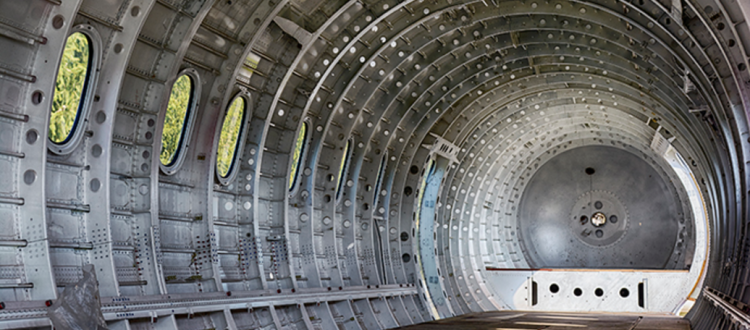New Metal Nanocomposite Developed by UCLA Researchers
The transportation industry may transform with a newly understood metal nanocomposite.
As the industry moves closer to mastering aluminum and other lightweight metals for use in manufacturing, scientists at the UCLA School of Engineering and Applied Sciences
have developed a new, super-strong, yet remarkably light material that could transform aerospace and automobile manufacturing.
The new metal is composed of magnesium (about 86%) infused with a dense and even dispersal of ceramic silicon carbide nanoparticles(14%). Magnesium is an abundant, lightweight, load-bearing material used extensively to increase strength, hardness, and corrosion resistance in steels and aluminum. Silicon carbide is a hard ceramic used to make car brakes, knives, and bulletproof vests. Using silicon carbide nanoparticles to strengthen magnesium without compromising its plasticity is not a new idea. Xiaochun Li, the principal investigator on the research and Raytheon Chair in Manufacturing Engineering at UCLA say “It’s been proposed that nanoparticles could really enhance the strength of metals without damaging their plasticity, especially light metals like magnesium, but no groups have been able to disperse ceramic nanoparticles in molten metals until now.” “With an infusion of physics and materials processing, our method paves a new way to enhance the performance of many different kinds of metals by evenly infusing dense nanoparticles to enhance the performance of metals to meet energy and sustainability challenges in today’s society.” As for the transportation industry, it could be used to make lighter airplanes, spacecraft, and cars. This would help improve with fuel efficiency, as well as in mobile electronics and biomedical devices.
The problem was clumping. Normally, ceramic nanoparticles tend to bunch together when they are added to a molten metal. Instead of becoming stronger, the material becomes more brittle. To do any good, these particles need to be evenly dispersed in the mixture and hold their place until the new material cools. Researchers from the UCLA team used ultrasonic processing to evenly disperse the nanoparticles of silicon carbide in the molten magnesium-zinc. Then, they applied high-pressure torsion (HPT) to compress it.
There are many positives to the new nanocomposite alloy. It is lighter, stronger, and more heat-resistant than other metals currently used to build cars, planes, and spacecraft. It has demonstrated record levels of specific strength and modulus, or stiffness-to-weight ratio. Moreover, magnesium is also readily available in large quantities. That means manufacturers would be able to use the composite to build lighter and stronger products at a lower cost, and with a much lower environmental impact than any other competing metal.
Most importantly, the new nanocomposite alloy offers all of these advantages without compromising safety or quality of the manufactured good. Imagine a car or a plane that costs less to use without jeopardizing your safety. That alone makes this new material worth considering. The UCLA research team has already developed a scalable manufacturing method that incorporates their new nanoparticle-based process.
James Wilkey – American Welding Society Blog
Matthew Chin of UCLA Newsroom website
Photo Cred: American Welding Society

